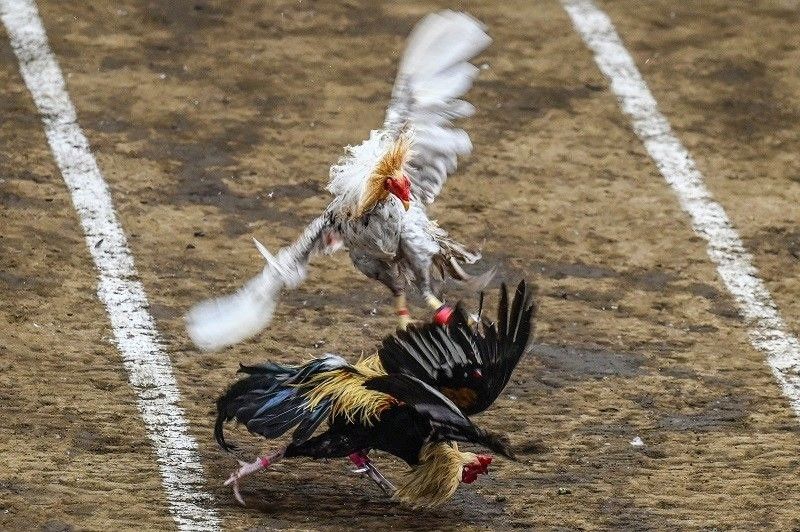
Within those depths of country venues and temporary stadiums, a hidden realm flourishes, in which zeal and heritage intertwine in a display that has enraptured many for centuries. The sport of cockfighting, frequently viewed via a perspective of controversy, encompasses a vibrant mosaic of tradition, society, and competition. Beneath the facade, the existence of a fighting cock handler unfolds, marked by dedication, tactics, and an unwavering bond with the birds they train.
Trainers, often regarded as both caretakers and contenders, dive themselves in the intricate art of rearing and training fighting cocks. Every day is a blend of hard work and affection, where the boundary between competition and companionship fades. As they get ready their fowl for the arena, these individuals not only rely on their knowledge of animal behavior but also their own instincts and experience, often handed down through families. In a universe where every match is a test of skill, quickness, and heart, the journey of a fighting cock handler reveals a intricate story that is as much concerning the person as it is about the feathered athletes they champion.
Origins of Cock Fighting
Cockfighting has a rich past that dates back millions of years, with proof of its occurrence found in various cultures across the world. The first documented records of cockfighting are linked to old civilizations, including the Indus Valley and classical Greece. In these societies, roosters were valued and often raised for their fighting prowess, becoming symbols of power and bravery. The practice spread through military victories and commerce, establishing a presence in countries such as the Roman Empire and later throughout Asia.
As cockfighting developed, it took on different cultural significances. In ancient Rome, it was popular among the aristocracy and often included betting, making it an initial form of amusement that combined sport and gambling. bắn cá rr88 Rooster fights were not just mere shows; they were events for community engagement and competition, showcasing the values and hierarchies of the time. This interaction of culture and sport continued to grow, leading to more organized events and the establishment of rules governing fights.
By the time cockfighting made its way to the Americas, it had already evolved a varied set of practices and fanfare. The sport became deeply embedded in the countryside traditions of Latin America and the Southern United States. Farmers and community members gathered for matches, and the sport fostered community identities and customs. Although often controversial, its longevity speaks to the compelling nature of the sport and the bonds it forms among participants and viewers alike.
The Role of the Handler
The caretaker holds an important part in the arena of cockfighting, acting as both the caretaker and trainer of the birds. The duties start far before the competition, as handlers ensure that the birds are in optimal shape. This involves a careful routine of nutrition, workouts, and socialization, which helps in developing both power and behavior of the birds. A skilled handler spends numerous hours observing and engaging with their roosters, understanding their individual personalities and preferences.
During preparation, handlers employ different techniques to prepare their roosters for the fight. This may include mock fights to assess their agility and fighting spirit. Trainers must be adept in recognizing when a bird is prepared for a match and when further training is needed. The bond formed between the handler and the bird is essential; faith and familiarity can significantly influence the rooster’s performance. Effective interactions is key, as handlers must learn to interpret their birds’ body language and signals.
On the day of the fight, the trainer serves as the strategist and emotional support for their rooster. The handler’s role extends beyond just releasing the bird into the arena; they are tasked for rallying the audience and maintaining the spirit of the competition. The handler’s experience and instinct can significantly impact the result of a fight, as they make quick decisions that can change the direction of the match. Ultimately, the relationship between the handler and the rooster encompasses dedication and mutual respect, establishing the backbone of the bird fighting event.
A Ethics and Debates
Cockfighting raises significant ethical concerns, primarily centered around the welfare of animals. Opponents argue that the activity is essentially inhumane, as it forces birds to violent confrontations that can lead to grave injuries or death. The raising and preparation methods employed by handlers typically prioritize aggression and fighting ability over the health of the animals. This has led to widespread condemnation from animal rights organizations, which advocate for the ethical treatment of all creatures and view this practice as a form of exploitation.
Furthermore, the cultural acceptance of this practice in various communities complicates discussions about its ethics. For certain individuals, it is a deep-rooted tradition that represents a connection to cultural heritage and community identity. Proponents cite the abilities required for handling and training the birds, as well as the social aspects that occur around the events. However, this cultural perspective is often challenged by a growing awareness of animal rights, leading to heated debates about the morality of preserving traditions that involve harm to animals.
Legal controversies further complicate the matter, as this practice is illegal in many places while still being held underground. Authorities frequently grapple with enforcement, and where it is banned, supporters often argue that the law interferes on personal freedoms and cultural practices. This leads to a split between those who view cockfighting as a legitimate sport or cultural activity and those who believe it should be banned outright due to the implications of animal suffering. Navigating these perspectives remains a contentious aspect of the ongoing dialogue surrounding this issue.



